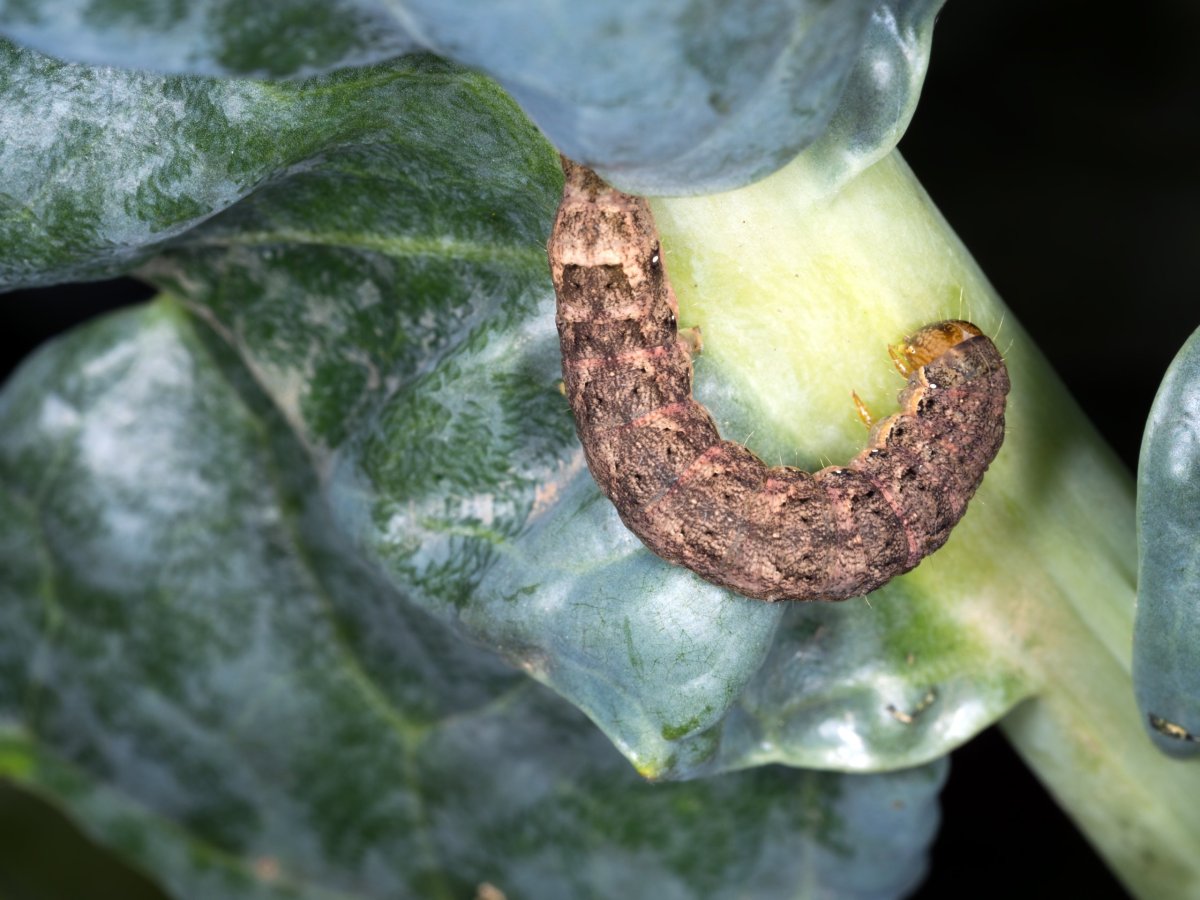They hide in your garden in the cold of winter, emerging in spring to feed on the stems of your young, vulnerable seedlings. They are cutworms. And if you don’t know how to stop cutworms before they get started, they can decimate your garden.
Luckily, there is some defense against these quiet night-feeders. However, you have to choose your strategy wisely, as there are several types of cutworms.
Discover 7 top tips for growing, harvesting, and enjoying tomatoes from your home garden—when you access the FREE guide The Best Way to Grow Tomatoes, right now!
What are cutworms, and are they really that bad?
Cutworms are, to quote the University of Nebraska–Lincoln, “the larval stage of many night-flying miller (Noctuid) moths.” They often spend the winter underground as larvae or pupae and emerge in the spring. They stay hidden in the soil or under cover during the day and feed at night, making it challenging to diagnose the plant damage at times.
You may know them as caterpillars, and there are four basic categories: surface, climbing, army, or subterranean. Even so, that won’t make a ton of difference in learning how to stop cutworms, because a lot of what you do will happen long before they emerge.
Are they all that bad, though? Cutworms chew on or through the stems of young seedlings, though some stay in the soil and feed on roots. A small handful of cutworms probably won’t do that much damage, but large numbers can ruin a garden in short order. That’s especially true for army cutworms, as they tend to move in large groups. Now then, what can you do about them?
How to stop cutworms and keep your vegetable garden for yourself
Prevention is always the best approach when you’re looking at how to stop cutworms or any other pest. Since these creatures overwinter in your garden, one of the steps you can take is to make sure you remove any debris or weeds at the end of the season.
Likewise, when they first emerge, they may feed on weeds or grasses until they have better food (aka your seedlings) to feed on. Therefore, keeping your garden free of weeds and other plants can help.
The University of Connecticut Home & Garden Education Center suggests creating a barrier “by wrapping paper, aluminum foil, thin cardboard, or similar materials around the base of transplant stems.” That’s actually an excellent way to keep several types of pests away from your young seedlings.
Diatomaceous earth is another good barrier. It’s entirely natural and won’t harm birds or bees as long as you keep it on the ground, but cutworms won’t want to cross over the sharp-edged shells. Incidentally, diatomaceous earth is a great way to deter snails and slugs, as well.
Cutworms have several natural predators, including birds, so anything you can do in your area to make it attractive to birds will help.
If you want to know how to stop cutworms with a more hands-on approach, plant a row or two of sunflowers. Cutworms love sunflowers, so once evening rolls around, you can head out to the garden, pick them off, and drop them into soapy water.
Have you had to deal with cutworms in your garden? What did you do?
Discover 7 top tips for growing, harvesting, and enjoying tomatoes from your home garden—when you access the FREE guide The Best Way to Grow Tomatoes, right now!
